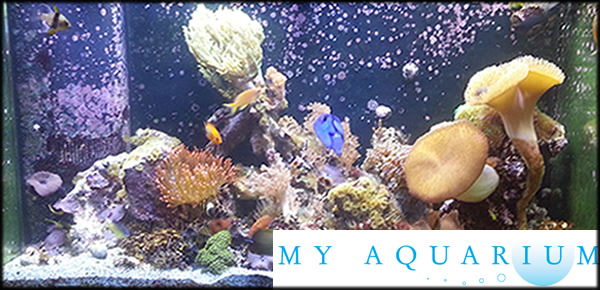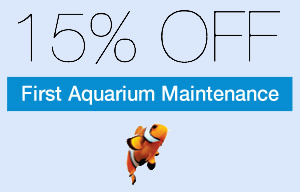Clownfish/Anemonefish (Pomacentridae)
Clownfish Family Characteristics:
The Clownfish have come to represent the very essence of tropical marine fish keeping. Clownfish are brilliantly colored, full of character and relatively easy to keep. Many hobbyists would not consider a marine aquarium complete without one.
Clownfish are also known as Anemonefish and both terms are correct. As their principal common name suggests, anemonefish live in close association with sea anemones, especially Heteractis and Stoichactis species. The anemonefish was thought to be immune to the stinging cells of the sea anemone, but it now seems certain that the mucus on the fish prevents the stinging cells from being activated by masking the fish as potential prey.
The clownfish and anemone relationship is usually referred to as being symbiotic; which means that the fishes and anemones live in close proximity to one another, often to their mutual benefit. There may be some doubt about the benefit derived by the anemones in return for not stinging the fish, being highly territorial by nature, Clownfish chase away fishes that might eat the host anemone, also the Clownfish will often bring food back and feed its host anemone.
Despite their close relationship in the wild, most anemonefish will live quite happily in the aquarium without an anemone (and vice-versa), but then you will not see the fish behave as it does in nature. Anemonefish generally live in large groups, only a dominant pair will breed, the rest remaining as male fish. If any disaster should remove the dominant female though, all is not lost; the dominant male will change sex and become a breeding female that will then pair off with the next dominant male.
Many anemones are only big enough to house a pair of fish, and all other prospective 'tenants' are seen off. This is more often than not the case in the aquarium and it is recommended that each anemone should host a pair of anemonefish only; more than two Clownfish may be relentlessly attacked. Very large tanks may accommodate several pairs of anemonefish without too much trouble, but smaller tanks should only house one pair, otherwise serious territorial disputes could ensue.
Anemonefish are fairly easy to pair, spawn and raise. Commercially bred anemonefish are now readily available and these should be purchased wherever possible to preserve wild stocks under pressure from pollution and habitat destruction.
Diet And Feeding:
In the aquarium, Clownfish will take live foods, algae, frozen foods, flake etc. All species of anemonefish will take dried foods readily. They are not picky eaters and will take almost anything.
Aquarium Behavior:
Anemonefish are very suitable for keeping in the aquarium, where they will naturally associate with suitable anemones. In this way, you can keep a pair of Anemonefish in a relatively small tank.
List Of Some Popular Saltwater Aquarium Clownfish:
- Clarkii Clownfish (Amphiprion clarkii)
- Red Saddleback Clownfish (Amphiprion ephippium)
- Saddleback Clownfish (Amphiprion polymnus)
- Tomato Clown, Fire Clown, Bridled Clownfish (Amphiprion frenatus)
- Common Clown, Ocellaris Clownfish (Amphiprion ocellaris)
- Black And White Ocellaris Clownfish (Amphiprion ocellaris var.)
- Black Ice Ocellaris Clownfish (Amphiprion ocellaris var.)
- Midnight Ocellaris Clownfish (Amphiprion ocellaris var.)
- Salmon Clownfish, Pink Skunk Clownfish (Amphiprion perideraion)
- Orange Skunk Clownfish (Amphiprion sandaracinos)
- Maroon Clownfish (Premnas biaculeatus)
- Yellowstripe Maroon Clownfish (Premnas biaculeatus)
- True Percula Clownfish (Amphiprion percula)
- Cinnamon Clownfish (Amphiprion melanopus)
- Fiji Barberi Clownfish (Amphiprion barberi)


